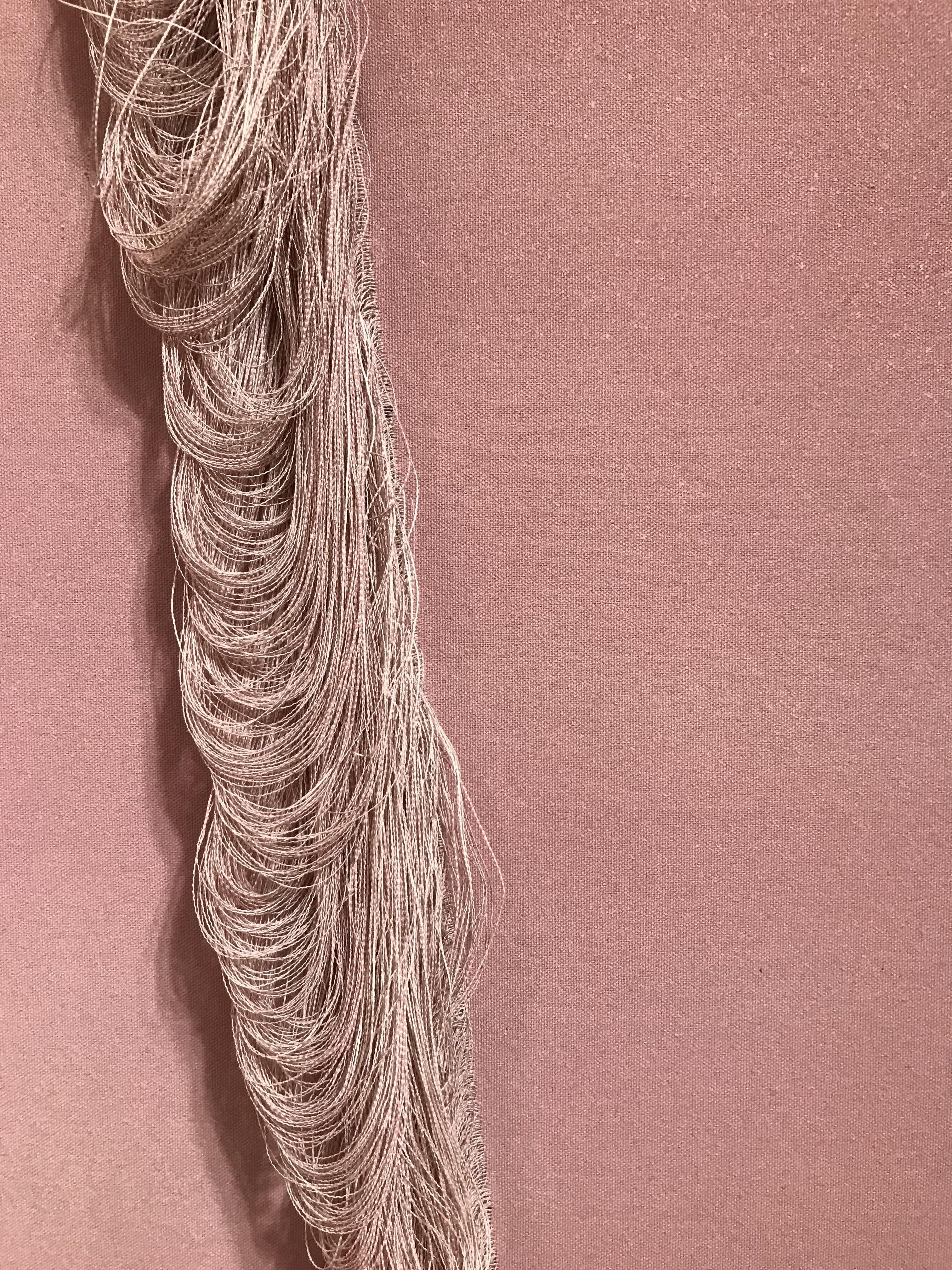
In this fast-paced modern world it seems like getting things done quickly is a matter of survival. Time is money, right? Well not to Carlo Petrini, credited with starting the slow movement.
In 1986 Petrini organized a protest when a McDonald’s was placed in the Piazza di Spagna in Rome. Since that protest the slow movement has enveloped every aspect of human life and developed into a philosophy that seeks out the “right” speed for various activities rather than assuming faster is always better. It would have people relish the passing of time and favor quality over quantity. Despite the speed of change today this movement is grounded in the notion that our basic human needs remain the same, and meeting these needs cannot be rushed.
This image was taken at Ko Kirk Yamahira’s recent exhibition at the Frye Museum in Seattle. Yamahira is a Seattle-based artist who creates his work through what he calls “undoing.” He takes simply painted canvas frames and painstakingly removes or stretches the individual threads. In many of the works the removed threads expose the frame that supports the painted canvas.
Sometimes threads are simply allowed to hang sensually from the painting itself. Painting is commonly seen as a process that involves the application of pigment to a canvas, but in this case Yamahira has created compelling compositions by taking away or reducing the canvas itself.
The pieces are not given a particular predetermined orientation — giving those that install the work significant influence over the composition. The work not only challenges how paintings are composed and made but how an artist should spend their time. The laborious time- consuming process of removing these threads highlights how slowly this work was made. Hours and hours are spent creating what Amanda Donnan, curator of the exhibit, compares to a loose gestural brush stroke. One must ask: How much of a work’s significance, value and impact has to do with the time required to produce it?

Two quotes from Robert Henri’s The Art Spirit come to mind:
“The end will be what it will be. The object is intense living, fulfillment; the great happiness in creation.”
and
“Some one has defined a work of art as a “thing beautifully done.” I like it better if we cut away the adverb and preserve the word “done,” and let it stand alone in its fullest meaning. Things are not done beautifully. The beauty is an integral part of their being done.”